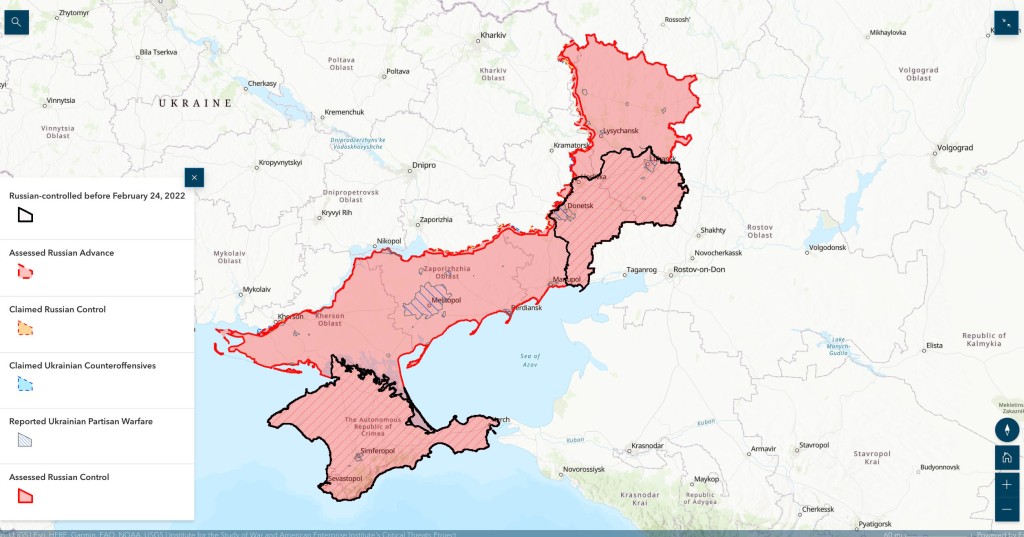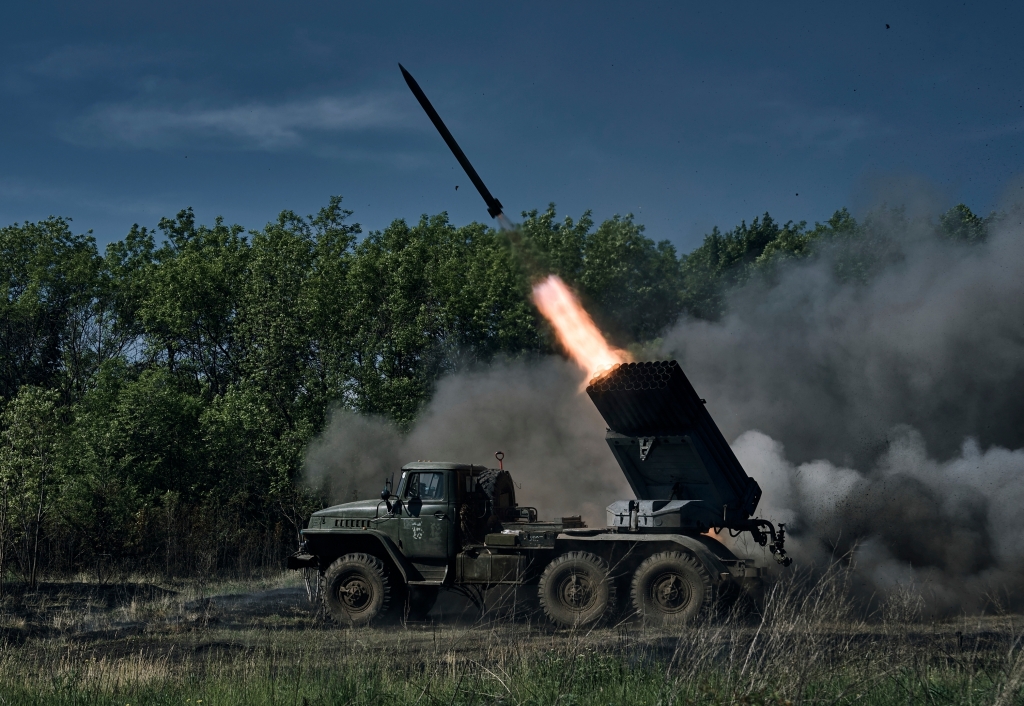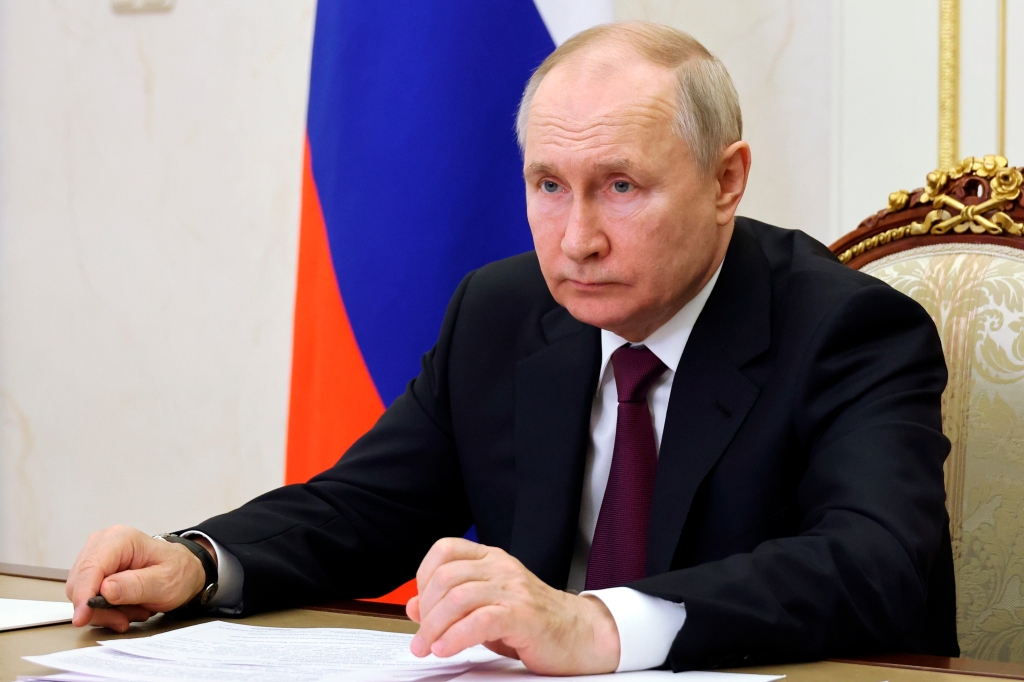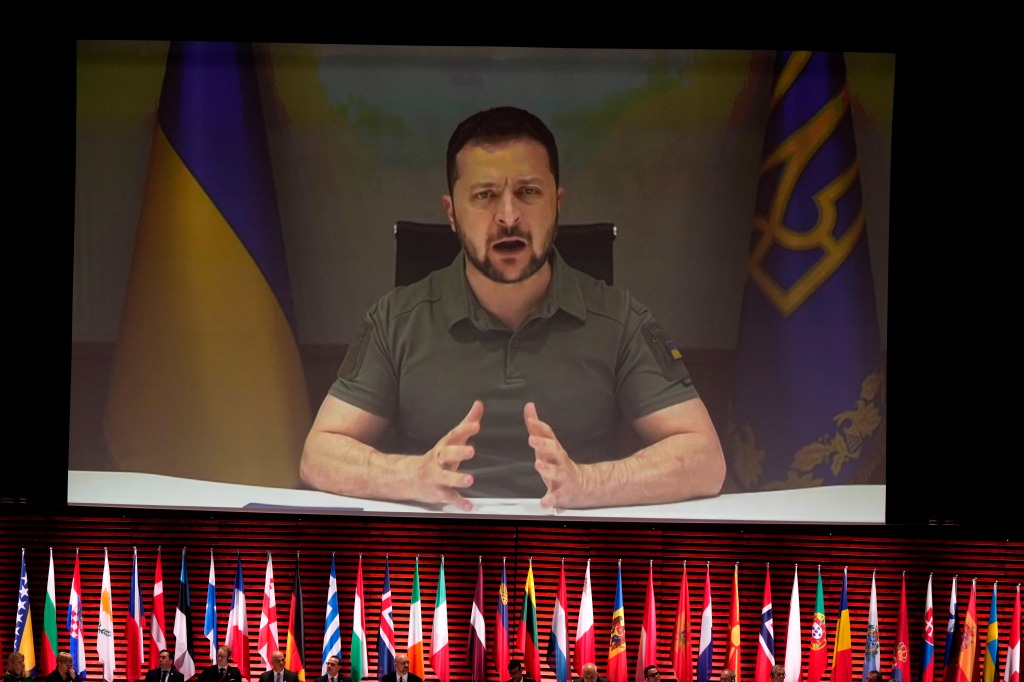Ukraine readies counteroffensive to push out Putin’s forces
Anticipation is mounting for Kyiv to finally launch its long-awaited counteroffensive and deliver a decisive blow that would rid the country of the Russian menace — but the consensus is that the road to liberation will be a long and bloody grind.
Ukrainian military brass have been understandably tight-lipped about their plans, not wanting to tip their hand and spoil what President Volodymyr Zelensky ironically called “the surprise,” but recent events in Bakhmut in eastern Ukraine suggest that the counteroffensive may be imminent.
Ukraine has an “imperative” to go on the offensive in order to demonstrate to its Western partners — as well as to its own people — that it is making progress after the winter stalemate, US Army Brig. Gen. Mark Kimmitt said on CNN.
Military experts have identified five key areas where Kyiv could unleash its counterpunch, which may get underway in the coming weeks as the warm weather dries out the muddy roads.
Zaporizhzhia
Zaporizhzhia in southeastern Ukraine has been touted as a promising launch point for the attack. If successful, Kyiv’s troops could make their way to the Russian-controlled city of Melitopol on the Azov Sea and cut off Moscow’s supply lines linking the Donbas to Crimea, reported the Spanish newspaper El Pais, citing analysts.
Ukrainian armored battalions have reportedly been preparing for battle in Zaporizhzhia, while Russia, which controls half of the province — including the city of Enerhodar that is home to Europe’s largest nuclear power plant — has announced evacuations of civilians in towns adjacent to the front.
Russians have been busy digging trenches near a reservoir around the Zaporizhzhia nuclear facility in preparation for a possible assault.

Kherson
Kherson, southwest of Zaporizhzhia, has also been floated as a counteroffensive contender.
Gen. Kimmitt speculated that the Ukrainian army could try to slash through Russian-held territory stretching from Kherson in the west to Berdiansk in the east.
Kimmitt said the move, if successful, would “unhinge” the Russian offensive and “essentially put all of Crimea at risk.”
In a different scenario, Kyiv’s troops could launch an amphibious assault against the far bank of the Dnipro River, which is currently dividing the Russian and Ukrainian armies.
Ukraine recaptured the city of Kherson and the surrounding towns back in November, forcing Russian soldiers to retreat to the opposite river bank, from where they have been mercilessly shelling the Ukrainian-controlled territory for the past seven months.
Trying to break through in this area would be a tall order because the river is a mile wide, and any attempts by Kyiv’s forces to cross the Dnipro via pontoon bridges would be met with artillery barrages.
Bakhmut
And then there is Bakhmut in the east, which has seen some of the most ferocious fighting of the war and has been compared to a “meat grinder.”
On Thursday, the Ukrainian military reported that its troops had advanced in places around Bakhmut by more than a mile, marking Kyiv’s biggest gains there in six months.
Russian mercenaries with the Wagner Group have spent more than nine months trying to capture the mostly obliterated city, which Moscow views as a stepping stone towards gobbling up the rest of the eastern Donbas region.
Wagner boss Yevgeny Prigozhin, who has been openly feuding with Russian military brass and accusing them of denying his mercenaries ammunition, confirmed that regular troops have been abandoning their positions on the flanks, even as his fighters continued advancing inside the city.
Ukraine revealed that its tactic around Bakhmut is deliberately to draw Russians into the city in a bid to weaken Moscow’s defenses elsewhere ahead of the counterassault.
“Wagner troops climbed into Bakhmut like rats into a mousetrap,” Oleksander Syrskyi, commander of Ukraine’s ground forces, told troops in a video he released this week.
Ukrainian officials have signaled that the action around Bakhmut is not part of the broader counteroffensive but is a prelude to it.
An interactive map created by the Institute for the Study of War (ISW), last updated Wednesday, shows Ukrainian advances in areas north and south of Bakhmut, including near the towns of Bohdanivka and Hryhorivka, Ivanivske and Bila hora.

Donetsk
Rather than focusing exclusively on Bakhmut, Ukrainian troops could unleash an assault on the entire Donetsk province in the east, large swaths of which have been under the control of Moscow-backed separatists for nearly a decade.
Battles have been raging around the town of Marinka in the province, and Ukrainians have been advancing along the Krasnohorivka railroad, according to analyses from the ISW.
One of the major Russian objectives in the war is to take full control of Donetsk, where the cities of Kramatorsk and Sloviansk remain in Ukrainian hands.
Like in Zaporizhzhia, Russians in Donetsk have been digging trenches and erecting barricades across the entire front line in preparation for a counterpunch in that direction.
Kharki
The Kharkiv province in the northeast has been under Kyiv’s control since September, when Ukraine launched its first successful counteroffensive. The region has seen little military activity over the past few months. However, it has been mentioned as a possible launch point for an assault against the Russian-controlled Luhansk province.
According to some reports citing Russian sources, Ukrainians have been carrying out reconnaissance and sabotage missions around the city of Kreminna, and the two armies have been in a standoff between the towns of Novoselivske and Kuzemivka.
Away from the blood-soaked battlefields of the Donbas, experts believe that Ukraine has been “softening” the enemy by carrying out drone attacks against Russian fuel depots and storage facilities, oil pipelines and trains.

Between April 24 and May 11, at least 10 such incidents have been reported in Russia or its occupied territories in Ukraine. Kyiv has not taken responsibility for any of the strikes, some of which were reportedly carried out using British-supplied Storm Shadow long-range cruise missiles.
Experts believe that Ukraine, whose military force is a fourth of Russia’s, is looking to destroy the enemy’s resources, including fuel needed to power their tanks and armored vehicles, in order to level the playing field ahead of the counteroffensive.
“This is the preparatory stage,” Oleksandr Kovalenko, an analyst at the Ukrainian Center for Security Studies told the Wall Street Journal. “It is about destabilizing and weakening the capabilities of the enemy before the offensive.”
In a conversation with NPR’s Ailsa Chang this week, Max Bergmann, head of the Europe, Russia and Eurasia Program at the Center for Strategic and International Studies, said that the intense fighting currently happening in the Donbas could be a “diversionary tactic” meant to distract from Kyiv’s march south towards Crimea.
Bergmann warned that Russians have been actively preparing for Kyiv’s counteroffensive by digging in World War I-style trenches and rigging barricades and barbed wire to stop the Ukrainians’ progress.
“The problem that Russians have is the line is fairly long,” he added. “They’re going to have to defend a lot of territory, and they’re going to have to sort of guess where the main thrust of the offensive will go.”
Shipments of modern battle tanks, missile systems, air defense systems and ammunition supplied by NATO member states have been streaming into Kyiv for the past several months in anticipation of the counterattack.
The overarching goal for Ukraine’s forces is to liberate the sixth of the country’s territory that Moscow claims to have annexed, including the Crimean Peninsula, which has been under Russian control since 2014.
According to Bergmann, Ukrainians would likely try to isolate Crimea and then put it under missile threat.
Zelensky has been consistently vague about the timeline of the looming counteroffensive. In an interview for public service broadcasters last week, he said that Ukraine needs “a little bit more time” before going on the offensive.
Zelensky said that while Kyiv’s troops, some of whom had been trained in the US, Germany and the UK, are “ready,” the military still requires “some things,” such as armored vehicles pledged by allies.
“With [what we already have] we can go forward, and, I think, be successful,” he said. “But we’d lose a lot of people. I think that’s unacceptable. So we need to wait.”

Following that interview, Zelensky went on a whirlwind tour that saw him travel to Rome, Berlin, Paris and London to secure additional hardware to beef up Ukraine’s burgeoning arsenal, including long-range drones.
But firepower would only take Ukrainians so far.
Retired US Lt. Gen. Mark Hertling, warned that Ukraine’s military commanders are facing the daunting task of having to incorporate new Western equipment and troops fresh off their training overseas into a cohesive force that will be effective on the battlefield.
“A complex set of obstacles and an intimidating series of defensive belts and potential ‘kill zones’ await in Kherson and Zaporizhzhia oblasts,” Hertling wrote in a Washinton Post op-ed Monday. “The Russians may have an advantage in occupying these static defensive positions, but only if their soldiers decide to fight.”
Hertling predicts that Kyiv’s forces will eventually liberate most — “if not all” — of the annexed territories, but he warns that “it is impossible to say with any certainty how exactly it will play out.”
But some experts believe that even if Ukraine’s counteroffensive is a triumph, and Kyiv’s troops are able to claw back the annexed lands from Moscow, it is unlikely to end the war any time soon – a chilling prospect that raises a new set of complicated questions for the future of Ukraine.
Rob Lee, senior fellow at Foreign Policy Research Institute’s Eurasia Program, believes that Western policymakers so far have done a poor job defining what success would look like for Ukraine and preparing for what happens after the counteroffensive.
“The big question is what happens maybe in the fall or winter, because the ammunition situation may become more difficult,” Lee said in a CNN interview. “It’s not a sustainable way of going forward.”
Hertling sounded a similar note in his Washington Post piece, arguing that NATO countries “must prepare to continue supporting Ukraine’s military indefinitely.”
“All wars end in some type of political agreement, but Russia is unlikely to be satiated,” the ex-general writes. “Even with a decimated military, Russia will attempt to rebuild, and Ukraine will remain vulnerable.”
Read the full article Here


